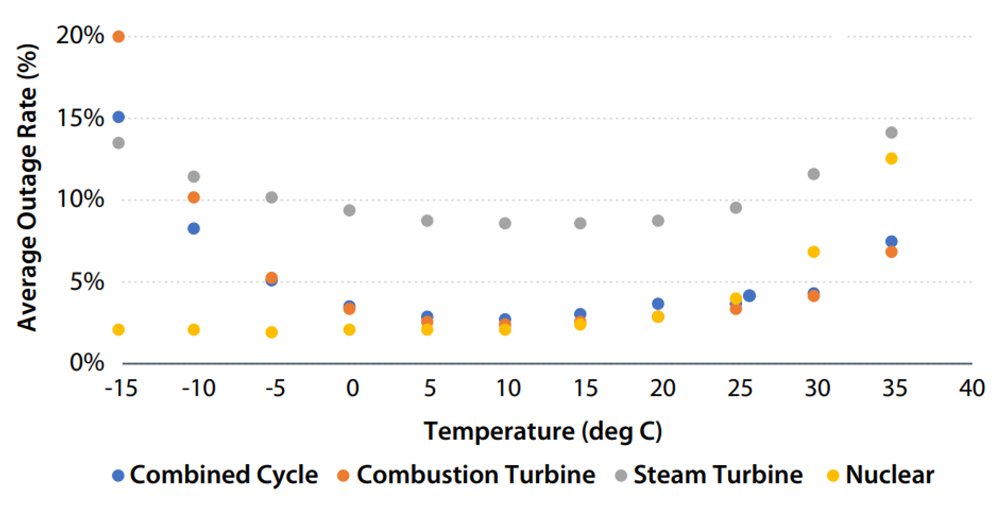A California Senate committee passed a raft of energy-related bills April 16, including legislation focused on grid-enhancing technologies, hydrogen and data centers.
The Senate Energy, Utilities and Communications Committee voted 18-0 on Sen. Steve Padilla’s Senate Bill 1006, which would require transmission-owning utilities to prepare a grid-enhancing technologies strategic plan to file with the California Public Utilities Commission (CPUC).
Under SB1006, the strategic plans would include an implementation timeline, and utilities would report their progress in their integrated resource plans. Starting in January 2026 and every four years thereafter, transmission utilities would be required to work with CAISO to evaluate which of their transmission and distribution lines could be cost-effectively fitted with advanced conductors.
Padilla (D) pointed to CAISO estimates that the state will need more than 7,000 MW of new transmission capacity each year for the next decade to meet its energy demand and GHG reduction goals.
Grid-enhancing technologies, such as dynamic line rating systems and advanced power flow control systems, typically are inexpensive hardware or software that can be deployed quickly, the bill states. Along with advanced conductors, the technologies could increase reliability while reducing transmission line congestion, renewable generation curtailment and wildfire risk.
The U.S. lags behind other countries in use of the technologies, bill supporters said.
Julia Selker, executive director of the Working for Advanced Transmission Technologies (WATT) Coalition, called the bill “a huge opportunity” for the state’s economy and decarbonization goals. “Grid constraints are blocking economic development in California, blocking renewable energy, and [this] will help us integrate new large loads,” Selker said, speaking in support of the bill.
No one spoke in opposition to SB1006, now headed to the Senate Rules Committee.
Hydrogen Bills
The committee also passed two bills by Sen. Josh Becker (D) that are aimed at accelerating the state’s progress on green hydrogen. The bills also seek to encourage the electrification of industrial processes that rely on fossil fuels.
SB993 would direct the CPUC to set rates “as low as feasible” to encourage green hydrogen or industrial facilities to use electricity when clean energy is abundant and curtail their demand at other times.
Customers would only be eligible for the tariff if they are new electrical customers or plan to increase their electrical load substantially after enrolling.
“What both green hydrogen and electrified industrial heat have in common is that they’re economically competitive only if they have access to inexpensive electricity, and they’re only good climate solutions if they rely on clean electricity,” Becker told the committee.
Proponents said the bill would support the Alliance for Renewable Clean Hydrogen Energy Systems (ARCHES), a private-public partnership in California. In October, the U.S. Department of Energy announced ARCHES will receive up to $1.2 billion in hydrogen hub funding. (See DOE Designates Seven Regional Hydrogen Hubs.)
SB993’s opponents include Pacific Gas & Electric. A PG&E representative said the utility is worried about cost shifts that might occur under the bill.
A second hydrogen bill passed by the committee, SB1018, would exempt certain solar or wind projects from being considered “electrical corporations” subject to CPUC regulation. The exemption would apply if the electricity were provided over private lines exclusively for electrolytic hydrogen production or electrifying industrial heat processes.
SB 1018 would expand the state’s current “over the fence” exemption for electricity generated for consumption on-site or for one or two neighboring parcels.
“That works fine for rooftop solar on a home,” Becker said. “But it’s not sufficient for the megawatts of solar, spread across many acres of land, that we’re going to need for a modest hydrogen facility or a factory.”
The exemption would apply only to solar or wind generation serving new electrical loads.
Opponents of the bill, including a San Diego Gas & Electric representative, expressed concerns about an exemption “undermining grid planning, safety and reliability.”
Both hydrogen bills now head to the Senate Appropriations Committee.
Data Centers
The committee also passed SB1298, by Sen. Dave Cortese (D), which applies to data centers’ emergency backup generating facilities.
The California Energy Commission (CEC) has licensing authority for thermal power plants of 50 MW or larger but offers an exemption for power plants of 100 MW or less.
SB1298 would raise the exemption’s cutoff to 150 MW. The bill originally set the cutoff at 200 MW, but Cortese agreed to lower that to 150 MW based on committee feedback. The exemption would be available to data centers’ backup power facilities that are not connected to the grid.
Before granting the exemption, the CEC must find the proposed facility would not have a substantial adverse effect on the environment or energy resources. If an exemption is granted, the project developer still must obtain local, state and federal permits.
Cortese noted the surging demand for digital services and said the data center vacancy rate in Silicon Valley is only 1.6%.
Data centers support businesses of all sizes, he said, including 911 call centers, GPS navigation systems, hospitals and the tech industry.
“This bill will create larger data center facilities that better meet the demands of California industries,” Cortese said.
The Bay Area Air Quality Management District opposed the bill based on concerns about pollution from diesel generators that data centers use for backup power.
The California Air Pollution Control Officers Association said lawmakers should re-examine the exemption’s 100-MW cap to see if it needs to be lowered to protect public health.
Proponents noted the limited amount of time the backup generators are used.
Following the committee’s 14-0 vote, SB1298 goes to the Senate Appropriations Committee.
